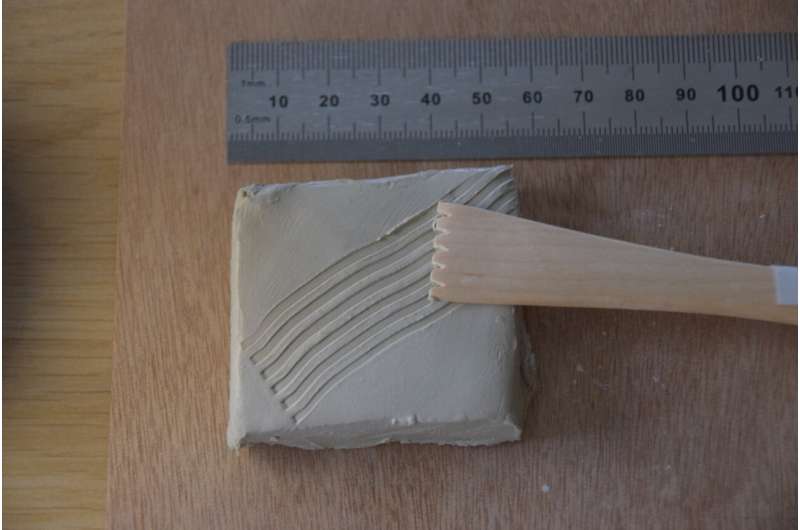This article has been reviewed according to Science X's editorial process and policies. Editors have highlighted the following attributes while ensuring the content's credibility:
fact-checked
peer-reviewed publication
trusted source
proofread
Identifying the maker of an artwork by fingerprint examination

Dzemila Sero, now Migelien Gerritzen Fellow at the Rijksmuseum and former postdoc at the Centrum Wiskunde & Informatica, together with a team of researchers from the Rijksmuseum, Leiden and Cambridge University, examined the terracotta sculpture "Study for a Hovering Putto" attributed to Laurent Delvaux (1696–1778) and housed in the Rijksmuseum permanent collection.
The methodology and findings were published open access in Science Advances in a paper with title "Artist profiling using micro-CT scanning of a Rijksmuseum terracotta sculpture".
To acquire preserved impressions on the sculpture, researchers used the computed tomography machine located at the FleX-ray Lab.
Sero and her colleagues developed a pipeline to acquire preserved fingerprints and toolmarks on the visible surface of the statue, as well as on its voids hidden from view, using 3D micro-computed tomography. In addition, they implemented methods for quantitatively characterizing these impressions.
The authors estimated that the partial fingerprints of this specific piece of art belong to an adult male. This corresponds with the attribution of the model to Laurent Delvaux. Estimating the age cluster of an artist can be useful in those cases where the master was closely working with young pupils, and more information extracted from surviving marks can add value to artworks by supporting artistic attribution.
Dzemila Sero initiated this research line when she was a postdoc in the Computational Imaging group at Centrum Wiskunde & Informatica and was part of the Impact4Art project.
The Impact4Art project was conceived by Joost Batenburg (project leader) and Erma Hermens.
Sero later obtained a Migelien Gerritzen Fellowship at the Rijksmuseum to run her own research project "Imaging patterns on terracotta sculptures."
She studies impressions left by artists on artworks from the Rijksmuseum collections, such as human prints, brush strokes and toolmarks, using high resolution 2D and 3D imaging and advanced computational methods.
More information: Dzemila Sero et al, Artist profiling using micro-CT scanning of a Rijksmuseum terracotta sculpture, Science Advances (2023). DOI: 10.1126/sciadv.adg6073



















